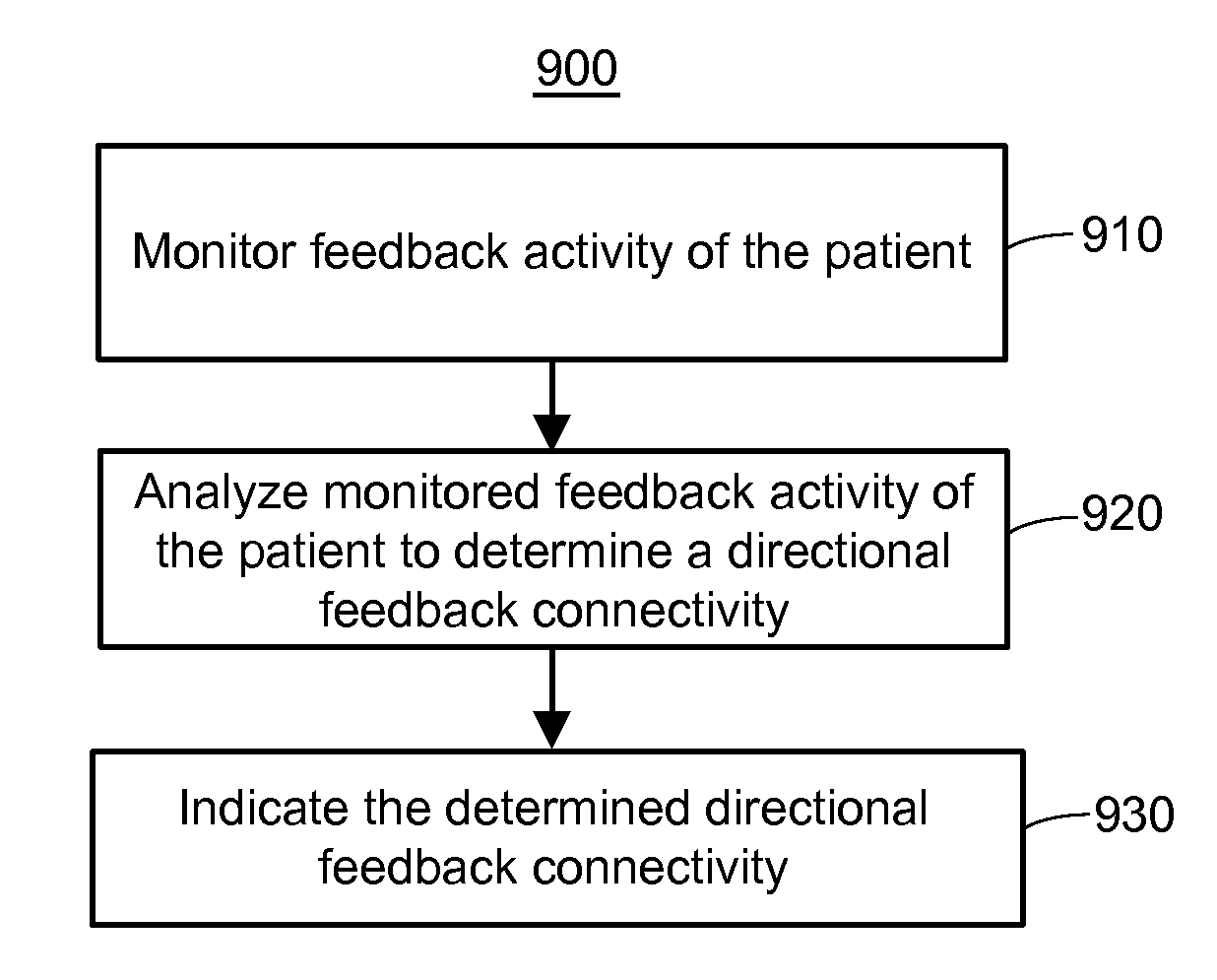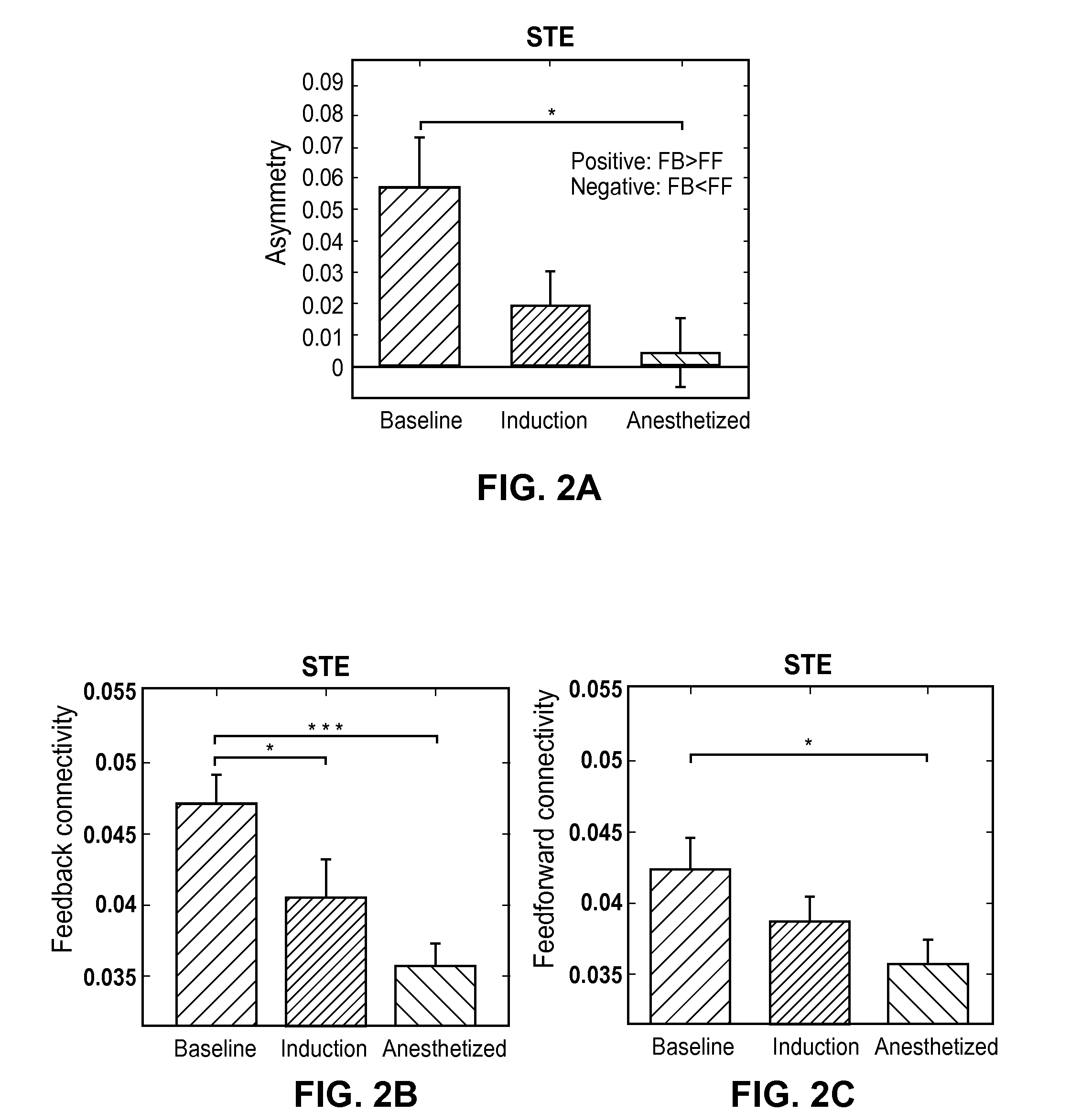System and method to assess causal signaling in the brain during states of consciousness
a brain state and causal signaling technology, applied in bioelectric signal measurement, medical science, diagnostics, etc., can solve the problem that the technique of routine intraoperative assessment of anesthetic depth in the millions of patients receiving general anesthetics is impractical
- Summary
- Abstract
- Description
- Claims
- Application Information
AI Technical Summary
Benefits of technology
Problems solved by technology
Method used
Image
Examples
Embodiment Construction
[0023]The disclosed system and method utilize electroencephalography (EEG) in conjunction with analytical methods to analyze causal interaction, i.e., effective connectivity, between different regions of the brain. In particular, the analysis of feedforward and feedback connectivity between, for example, the frontal and parietal regions of the brain (e.g., a frontoparietal network) may provide a neurophysiologic correlate for anesthetic-induced unconsciousness, sleep disorders, vegetative state, etc.
[0024]It was determined through the study of the directionality of frontoparietal connectivity in human volunteers during consciousness, anesthesia (e.g., propofol), and recovery, that feedback connectivity in humans was dominant in the conscious state with respect to the feedforward connectivity. After induction with propofol however, both the feedforward and the feedback connectivities precipitously decreased, although the feedforward connectivity recovered to baseline consciousness du...
PUM
 Login to View More
Login to View More Abstract
Description
Claims
Application Information
 Login to View More
Login to View More - R&D
- Intellectual Property
- Life Sciences
- Materials
- Tech Scout
- Unparalleled Data Quality
- Higher Quality Content
- 60% Fewer Hallucinations
Browse by: Latest US Patents, China's latest patents, Technical Efficacy Thesaurus, Application Domain, Technology Topic, Popular Technical Reports.
© 2025 PatSnap. All rights reserved.Legal|Privacy policy|Modern Slavery Act Transparency Statement|Sitemap|About US| Contact US: help@patsnap.com



